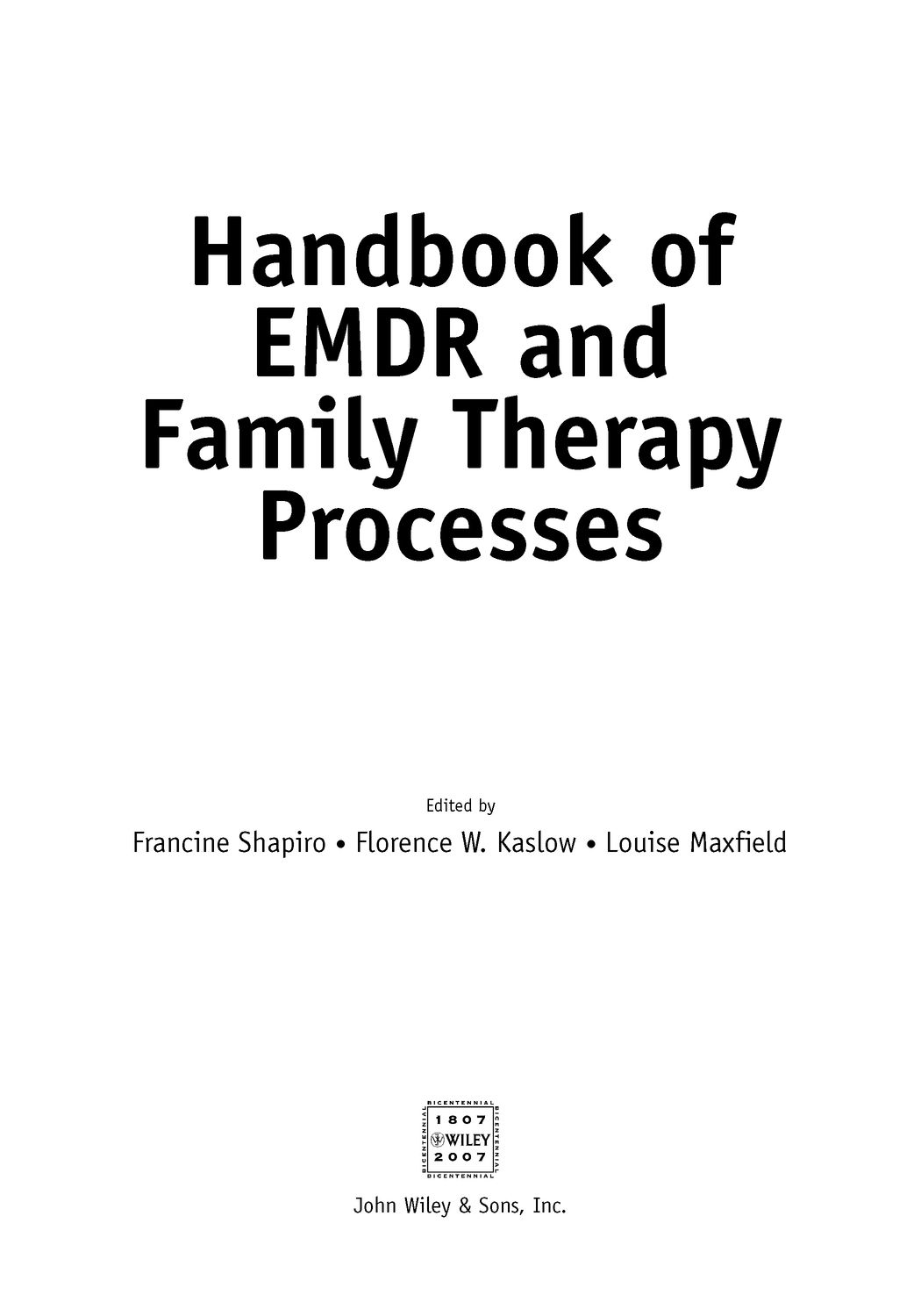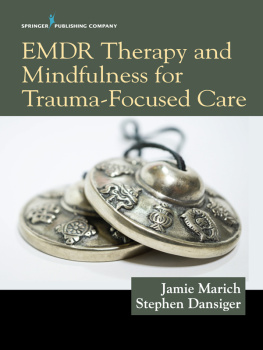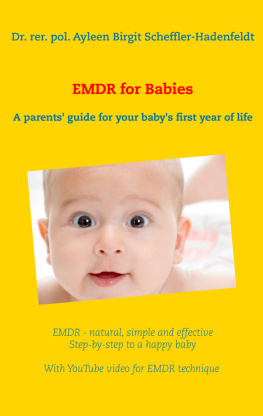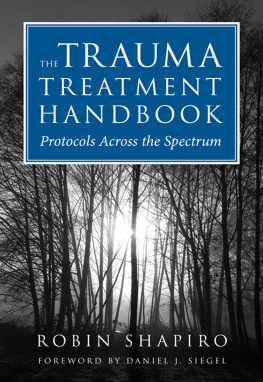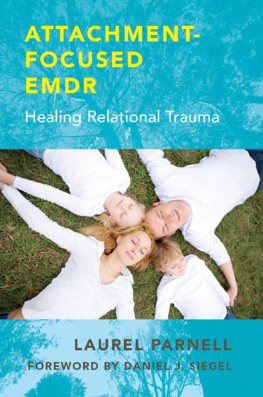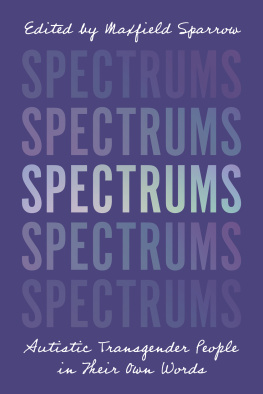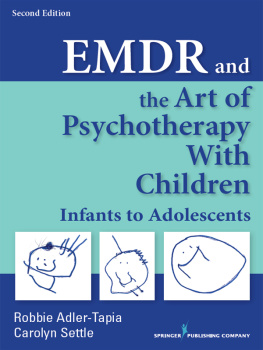Table of Contents
To
ROBBIE DUNTON
who nurtured the development of EMDR child treatment and laid the groundwork for all those who followed.
To put the world right in order, we must first put the nation in order; to put the nation in order, we must first put the family in order; to put the family in order, we must first cultivate our personal life; we must first set our hearts right.
Confucius
If you cannot get rid of the family skeleton, you may as well make it dance.
George Bernard Shaw
Foreword
I was extremely pleased to be invited to write the Foreword for this book, which I believe is so important that it should rapidly become essential reading for those in our field. In the past 2 decades, Eye Movement Desensitization and Reprocessing (EMDR) has become one of the most important methods for treating trauma. It has recently been recognized by the American Psychiatric Association as well as lauded by countries as diverse as Turkey and Ireland, where it has been used by professionals with populations beset by both natural disasters and people-made civil strife. The idea of the three editors to bring together EMDR and family systems theories is indeed a brilliant one, and I am honored to have this opportunity to be part of this groundbreaking endeavor.
The focus of this book on attachment, family relationships, and intrapersonal functioning is very similar to my own professional focus on interpersonal neurobiology. This multidisciplinary perspective (Siegel, 1999) enables us to build on the wisdom of many scientific disciplines in defining the mind and mental health. The integrative focus is extremely useful in understanding the mechanisms underlying traumas effects and an effective means to facilitate healing (Solomon & Siegel, 2003). In this book, EMDR and family system approaches are integrated in a unique fashion to reinforce the ways in which the treatment of individuals and families suffering from traumas wake can be brought into well-being.
Our brains are the social organs of our bodies. In the early years of our lives, interactions with others shape the important connections in our brains that in turn influence our internal sense of self and our capacity for healthy relationships with others. The internal and the interpersonal are woven together during these early years, and these domains of our experience continue to weave a tapestry of our ways of living throughout our lives. In clinical terms, self-regulation is the way we manage and balance such things as our emotions, our bodily functions, our thinking, and even our communication patterns with others. The term self can be misleading: An individual is continually shaped by relationships with others throughout the life span. This view is reinforced by new findings that the brain continually restructures itself in response to life experiences.
The synaptic connections among neurons create the fundamental structure of the brain. Genes are important for determining the overall architecture of the brain, but the conditions in the womb can also influence these connections, contributing to the temperament with which one is born. Temperament is the constitutional makeup of the nervous system, ones sensitivities, proclivities to react intensely or subtly, overall mood, regularity, and capacity to engage with novel situations. When a baby is born, his or her communication patterns with others, especially caregivers, play a fundamental role in molding the continuing development of the brain. Research in attachment has revealed that it is these patterns of communication between caregiver and child that influence the development of the childs capacity for self-regulation: balancing emotions, interpersonal intimacy, and even how he or she develops self-reflection (Sroufe, Egeland, Carlson, & Collins, 2005),
ATTACHMENT
When a child is fortunate enough to have interactions that are caring, attuned, and mutually regulating with the caregiver, he or she usually develops a secure attachment relationship. This attachment experience results in healthy development across a wide array of domains, including social, emotional, and cognitive (Cassidy & Shaver, 1999). Children less fortunate, who have suboptimal experiences with their caregivers, often develop insecure attachment types. If parents are emotionally distant, the childs attachment can become avoidant, and the child may become prematurely independent (Sroufe et al., 2005). These children ultimately may experience a distancing of their own awareness from their internal state as well as the internal worlds of others (Siegel, 1999). When caregivers are inconsistent and intrusive, the childs attachment relationship tends to be ambivalent, and the child may grow up with a great deal of uncertainty and anxiety about having his or her needs met or relying on others. In both of these situations, children adapt the best they can, finding a solution to their situation and coping in a way that enables them to survive and move on in life.
When the parent is terrifying to the child, a disorganized form of attachment can develop. In this situation, unlike the secure and first two insecure forms, the child has fear without solution and lives with the biological paradox of two simultaneously activated brain circuits: When children are placed in a state of terror, their brain activates the reflex Go to my parent for soothing and safety; simultaneously, the brain also has the activated circuit Go away from the source of terror. There is no organized adaptation to these conflicting experiences. Some theorists (Hesse, Main, Yost-Abrams, & Rifkin, 2003) have hypothesized that the result is a fragmentation in the childs state, one that ultimately leads to clinical forms of dissociation. This situation is not the same as the double bind, which has been alluded to in the family literature (Watzlawick, 1963), but is a form of biological paradox in which two circuits are simultaneously activated in the childs brain, leading to the fragmentation of a coherent response.
Attachment researchers (Hesse et al., 2003) found that the best predictor of each of these four categories of childrens attachmentsecure, insecure-avoidant, insecure-ambivalent, and disorganizedwas the nature of the parents adult attachment category:
| Childs Attachment Category | Parents Attachment State of Mind |
|---|
| Secure | Secure-autonomous |
| Insecure-avoidant | Dismissing |
| Insecure-ambivalent | Preoccupied |
| Disorganized | Unresolved-disorganized |
The parents adult attachment state of mind was measured by assessing their narrative coherence. A coherent narrative indicates that a parent has made sense of his or her early life and understands and is open to the impact of past relationships on present experiences. Even if parents had a frightening upbringing, the research suggests that if they have come to terms with their early life experience, their children will develop a secure attachment relationship. It is never too late to develop a coherent life story. Processes that aid the integration of the brain and facilitate the development of coherent narratives of ones life, such as EMDR, can be very effective in assisting parents to explore the nature of their own attachment, so that they can earn security in their own lives (Siegel & Hartzell, 2003). Family systems therapy can help them change their parenting behaviors so that their children can thrive.


